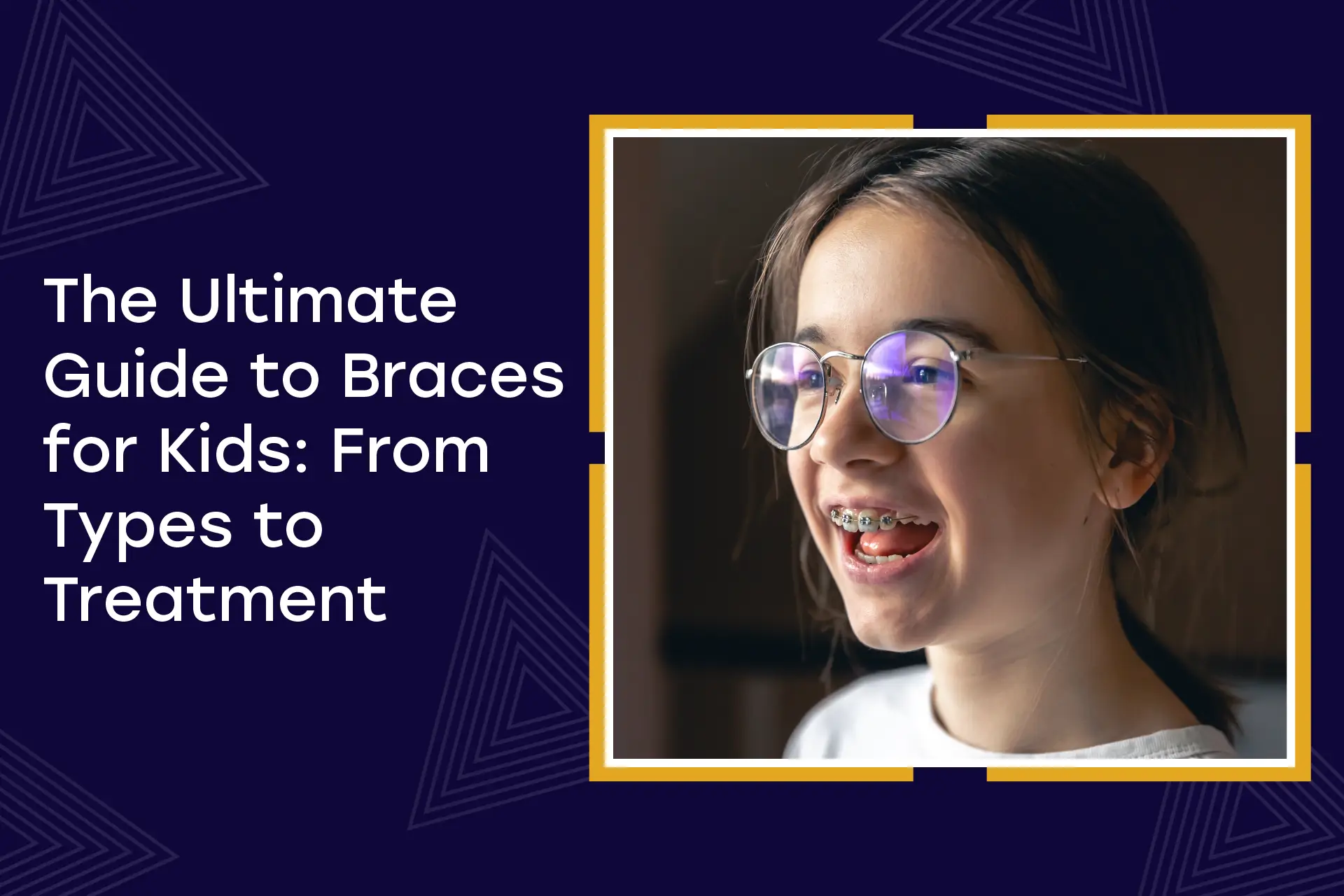Braces are usually advised for children to realign their teeth and jaw in cases of crooked teeth, bite problems, or overcrowded teeth. Early orthodontic treatment can help children have better oral hygiene, boost self-confidence, and improve facial structure, making dental care easier. Getting your child to start wearing braces is a form of investment as it will save them from major dental issues that could happen in the future due to negligence. This blog aims to cover why your child needs braces and how it can benefit them.
A] Why Children Need Braces
Several dental problems can be corrected by braces in children:
- Crossbite: This is a dental issue in which the upper teeth of an individual cannot fit in well with the lower teeth when chewing. This condition can cause odd wearing of teeth and the development of jaw issues like pains or discomfort after some time.
- Overbite/Underbite: An overbite occurs when the upper teeth overlap the lower teeth, and an underbite occurs when the lower teeth are positioned above the upper teeth. Such bite issues may lead to chewing and speaking problems, as well as jaw pain, soreness, or stiffness.
- Crooked or Crowded Teeth: Misaligned or overcrowded teeth are hard for a child to handle when they are brushing or flossing their teeth. These issues build up over time and may cause you to develop a cavity, gum disease, or other oral problems. Crooked teeth can also become even more displaced than they are if they are not treated at an early age.
Braces gradually realign the teeth, providing long-term oral health benefits and preventing more severe complications in the future. It’s essential to consult an expert Orthodontist in Wadala or in your city for your kid at an early age.
B] Types of Braces for Kids
There are various orthodontic options for kids, depending on their specific dental needs.
1. Traditional Metal Braces
These are the most common types of braces. Traditional metal braces consist of metal brackets attached to the teeth and connected by a wire. This system enables the orthodontists to apply pressure in equal proportions to reposition these teeth. These braces are highly effective and often the preferred choice for younger children. Kids also enjoy choosing colorful rubber bands for their braces, making the process more enjoyable.
2. Invisalign (Clear Aligners)
Invisalign offers a more discreet alternative to traditional braces. It uses clear plastic aligners custom-fitted to the child’s teeth. The aligners are removable, making them easier to brush and floss and less noticeable. However, they require discipline, as they must be worn for 20–22 hours a day to be effective. Invisalign is usually recommended for older children or teens with mild to moderate alignment issues. If you want Invisalign Treatment in Wadala, make sure to consult an experienced professional.
C] When Is the Right Age for Braces?
While every child’s dental development is unique, the general recommendation for an initial orthodontic check-up is around the age of 6 or 7. This is when early signs of dental misalignment or bite problems can be detected. The ideal age for braces, however, is typically between 8 and 14 years, when most of the permanent teeth have come in and the jaw is still growing. During this period, orthodontic treatment is more effective because the bones are still pliable, and the teeth can be more easily guided into their proper positions.
D] Braces Procedure for Kids
The process of getting braces involves several stages, each designed to ensure the best results for the child. Read the following procedure guide to braces for kids before heading for their treatment:
1. Consultation
Your dentist in Wadala will examine the child’s teeth, bite, and jaw alignment. X-rays and impressions may be taken to assess the teeth’ position and create a detailed treatment plan.
2. Fitting
If braces are deemed necessary, the next step is fitting them. Brackets are bonded to the teeth, and a metal wire is threaded through them. Over time, the orthodontist will adjust this wire to shift the teeth into the correct position gradually.
3. Regular Adjustments
The child will need to visit the dentist in Sion or where you live every few weeks for adjustments. These visits ensure that the braces are working correctly and that the teeth continue to move according to plan.
4. Treatment Duration and Care
Most children will wear braces for 12 to 24 months, depending on the severity of their dental issues. Proper oral hygiene is essential during this time, as food can easily become trapped in the brackets and wires. Regular brushing, flossing, and avoiding certain foods (such as sticky candy or hard snacks) are essential to maintain the health of the teeth and braces. Consult your dentist to understand the foods to avoid with braces for your kid.
E] Benefits of Braces for Children
Braces offer a wide range of health and emotional benefits for children that go far beyond simply straightening their teeth. Early orthodontic intervention not only improves a child’s dental function but can also prevent future complications, making the treatment a valuable investment in their overall health.
1. Improved Oral Hygiene
Properly aligned teeth are much easier to clean than crooked or crowded teeth. Braces help ensure that each tooth is positioned in a way that makes brushing and flossing more effective. Misaligned teeth often create tight spaces where food and plaque can accumulate, increasing the risk of cavities and gum disease. Once the teeth are straightened, these problems are easier to manage, reducing the likelihood of dental issues throughout the child’s life. Furthermore, well-aligned teeth can prevent uneven wear on the enamel, which can lead to tooth decay or damage over time.
2. Prevention of Future Issues
Addressing bite and alignment problems early can prevent more serious dental and orthodontic issues in the future. For example, an overbite or underbite left untreated may lead to temporomandibular joint (TMJ) disorders, which can cause chronic jaw pain, headaches, and difficulty chewing. Braces can also prevent uneven wear on the teeth, which might result in premature tooth loss or cracked teeth later in life. Early intervention with braces can correct these problems while the child’s jaw is still developing, leading to a more stable bite and reducing the need for invasive treatments, such as jaw surgery, in adulthood.
3. Boost in Confidence and Self-Esteem
A child’s smile can significantly impact their self-esteem. Children with misaligned or crowded teeth may feel self-conscious about their appearance, which can affect their social interactions and overall confidence. Braces help create a straight, beautiful smile, allowing children to feel more confident in their appearance. This boost in self-esteem can extend into many areas of their life, including school and friendships. Studies have shown that children and teens who are satisfied with their smiles tend to have a more positive self-image and better social skills, contributing to their emotional well-being.
Conclusion
Braces are a crucial tool in helping children achieve long-term dental health and a confident smile. By correcting alignment and bite problems early, braces not only improve oral hygiene but also prevent more serious issues later on. The earlier the intervention, the more effective the treatment is likely to be. Scheduling an early orthodontic evaluation at a Pediatric Dentistry in Wadala can ensure that your child receives the best care and the brightest smile possible.

Dr. Rishabh Pendurkar
Dr. Rishabh Pendurkar offers 16 years of clinical expertise, including his role as Consultant at the renowned Asian Heart Institute in Mumbai. Known for his precision and care, Dr. Pendurkar has successfully handled a wide spectrum of dental cases, from routine to complex treatments.


